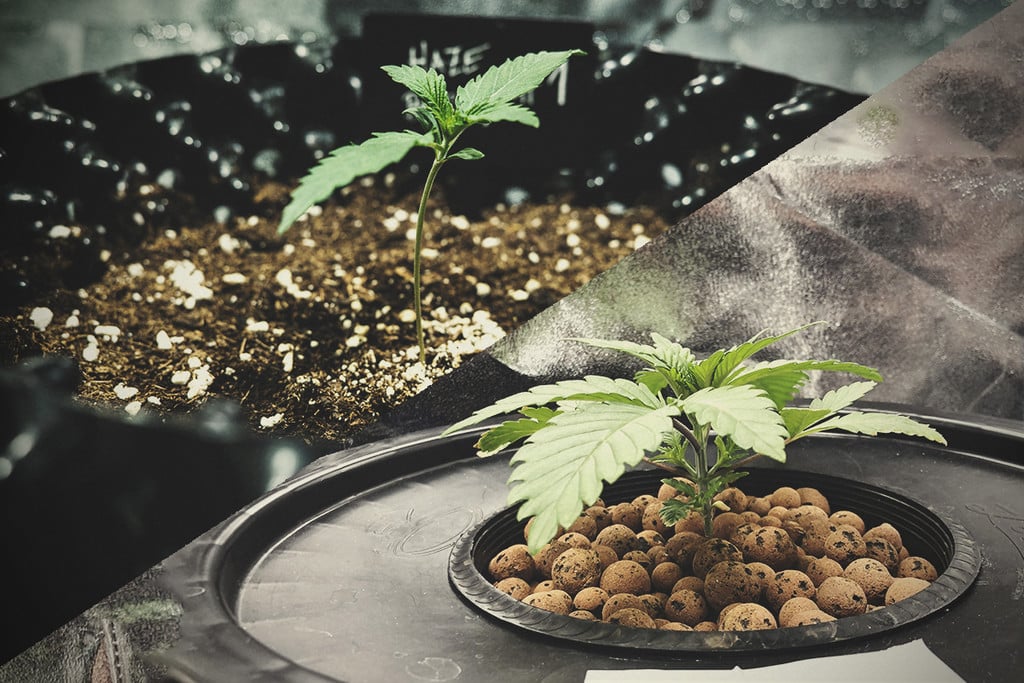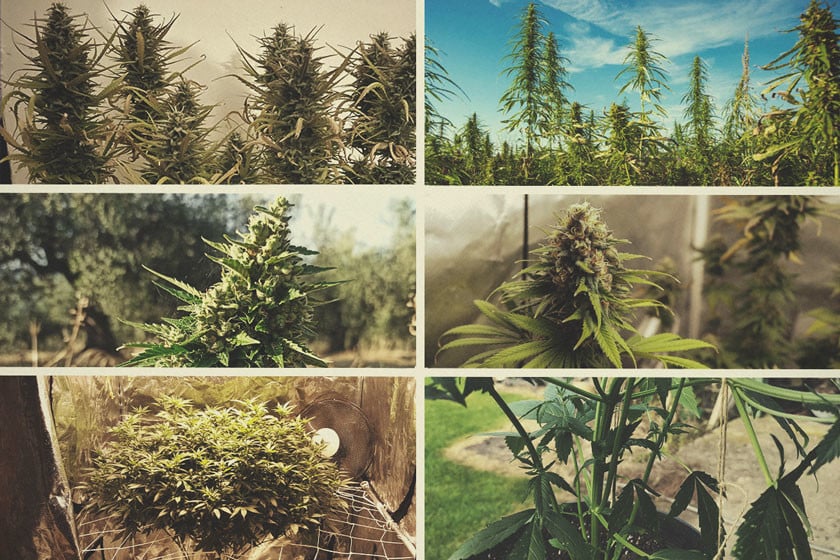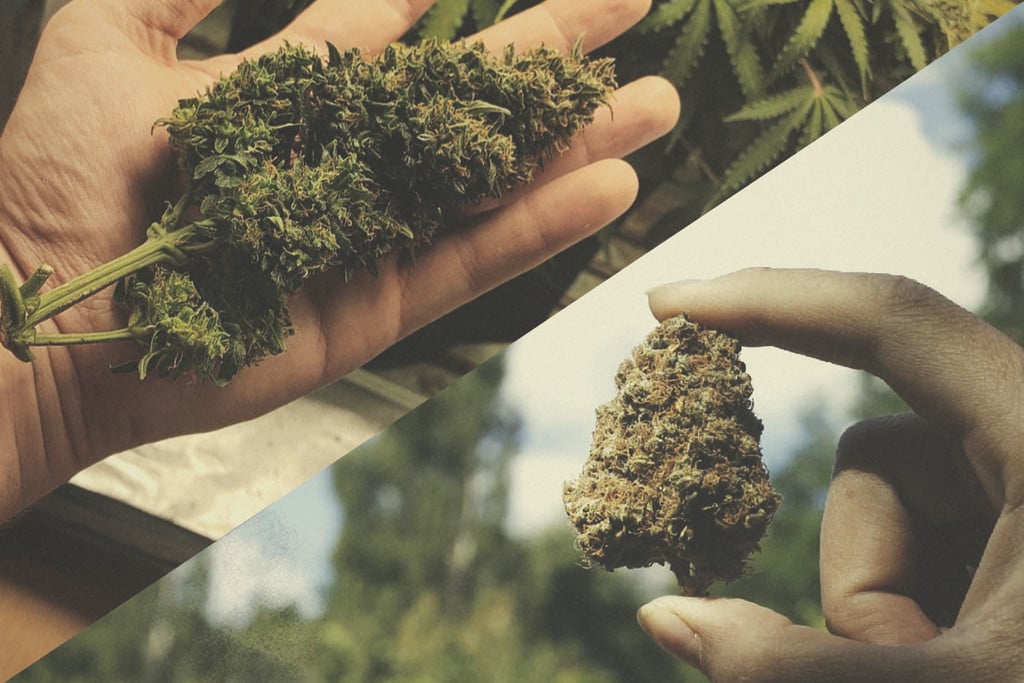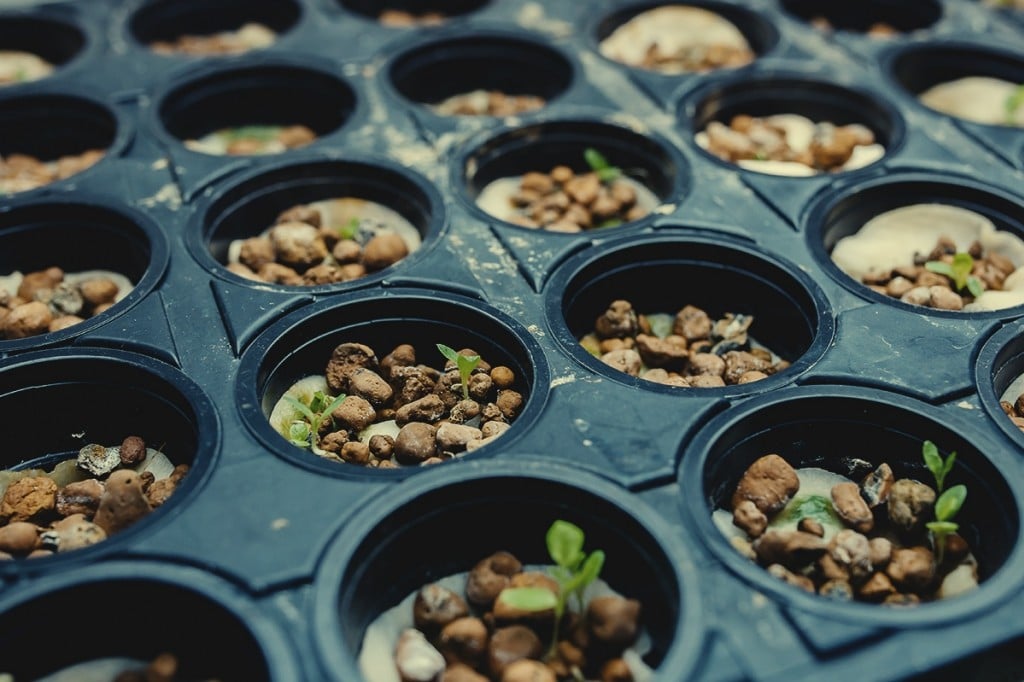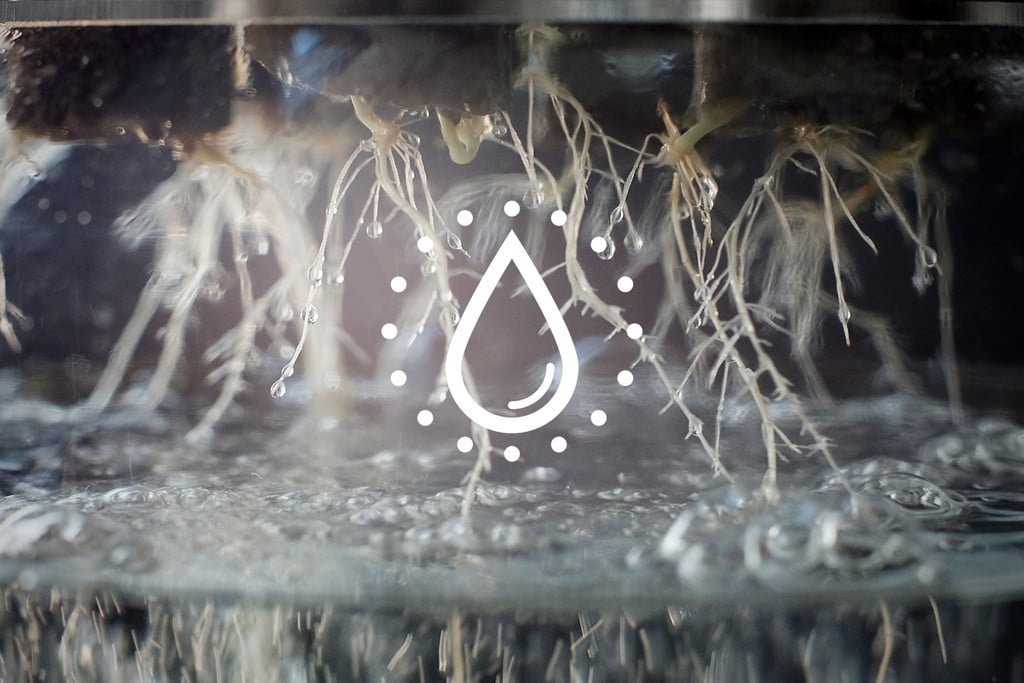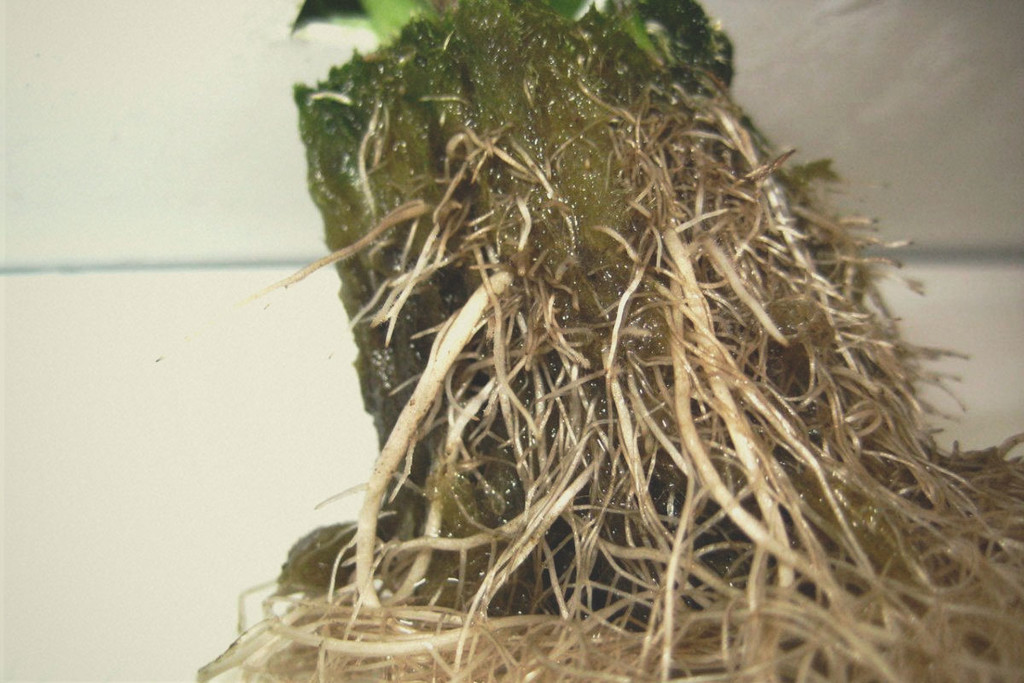.
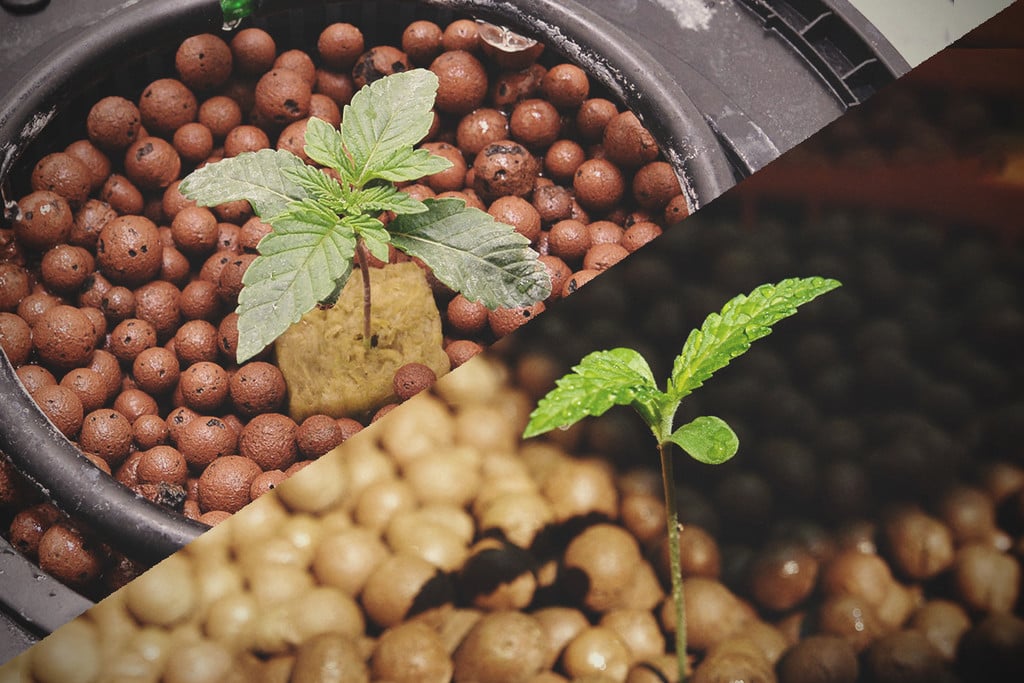
Cannabis Hydroponics: Indoor vs Outdoor
We've all seen those gorgeous pictures of hydroponic weed plants online. However, most of the time, they're pictured thriving under powerful grow lights and surrounded by fans and other electronic devices. But hydro growers aren't confined to four walls. In fact, hydro weed can thrive outdoors just as well as its soil-dwelling counterparts.
Contents:
Growing cannabis hydroponically offers many potential benefits. The technique boasts fast growth and large yields, a more efficient use of water, and complete control over plant nutrition. While many hydro growers opt to cultivate indoors, you are by no means confined to this setting. Just like soil-grown plants, hydro plants also thrive outdoors under the sun.
However, there are a few things you need to take into account if you wish to experience the best results in your outdoor hydro grow.
The Difference Between Hydroponic and Soil-Grown Cannabis
Before we delve into our main topic, let’s quickly recap how hydro and soil-grown cannabis differ.
Whether using organic or synthetic fertiliser, plants grown in soil rely on the growing medium itself to deliver nutritional inputs. In other words, you’re feeding the soil as opposed to feeding your plants directly.
This is not the case with hydro; here, plants are fed water-soluble nutrients that make direct contact with the root system. Instead of expanding their roots into soil, hydro plants send roots down into either water or air. Those permanently submerged in water receive oxygen from a device called an airstone, while roots that hang free in the air are intermittently fed using techniques such as ebb and flow.
At first, it might seem like hydroponic growing uses an unnecessary amount of water. But look a little deeper and you’ll find that hydro techniques actually use up to ten times less water[1] than soil-based ones. Hydro systems such as DWC and Kratky store most of the water required for a single grow in a reservoir, and techniques such as recirculating DWC keep the nutrient solution constantly moving around within the confines of a tube system. Growing in soil ultimately uses much more water due to runoff and evaporation.
Hydroponics has a long history, and its use spans back thousands of years. Today, agriculturalists use the technique to grow much more than just cannabis, including food crops such as cucumbers, leafy greens, strawberries, herbs, and peppers. The ability to stack hydroponic systems means food producers are able to grow more food using less space, all while saving huge quantities of water.
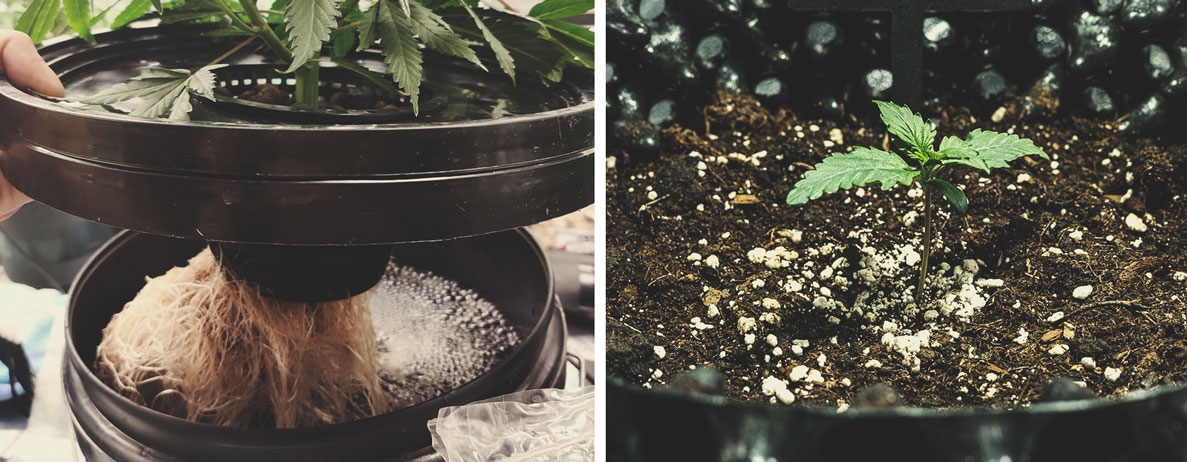
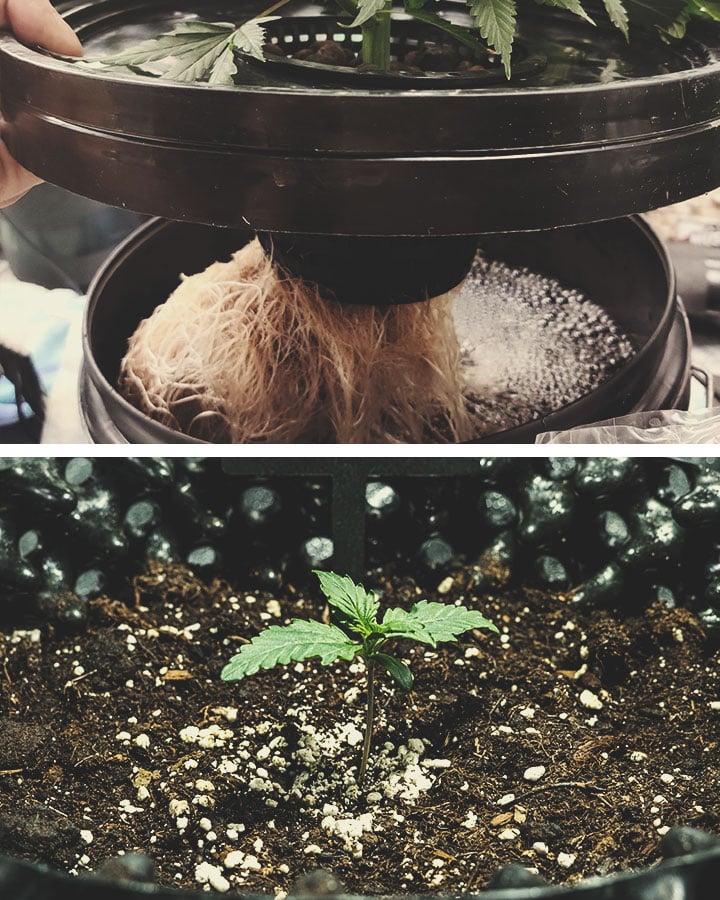
Indoor vs Outdoor Hydroponic Systems
Just like growing in soil vs hydro, there are several variables that make indoor and outdoor growing distinct. To provide a baseline knowledge of what to expect, below we compare the process of hydro growing indoors vs outdoors.
Cost
Growing hydroponically outdoors requires less of an initial investment, especially if you choose a basic setup. Most indoor hydro growers invest in a growing tent, and they have no choice but to use high-quality lights—which can do some serious damage to the electricity bill. Additional tools and equipment, like dehumidifiers and fans, only add to the cost of the setup.
In contrast, outdoor hydro growers need very few pieces of equipment, and don’t need any of these additional devices. Techniques such as the Kratky method also sidestep the need to run pumps, which involves electricity.
Space
Cultivating outdoors tends to provide growers with more space (depending on the circumstances). As well as allowing you to grow more plants if you so choose, increased space generally makes the growing process easier and more enjoyable. It also helps to prevent issues associated with overcrowding, such as mold.
Of course, more space also means you’ll have more options when it comes to strain selection. You can opt for small and compact varieties or massive tree-like sativa plants. Most indoor growers simply don’t have the space to cater to the latter, and thus are limited in the strains they can choose from.
Control
Although growing outside cuts costs and offers more space, it comes with far less control. Indoor growers have almost complete power over growing conditions, from air circulation and lighting to temperature and humidity. Growing outdoors, on the other hand, exposes plants to the elements. As such, you’ll need to prepare for the occurrence of heatwaves, torrential rain, and gale-force winds.
Pros and Cons of Outdoor Hydroponics
Now you know the key differences between growing hydroponic weed indoors and outdoors. Next, we’re going to hone in on outdoor hydroponic cultivation. We’ll start by covering the pros of growing hydro weed outdoors, before taking a look at some of the downsides.
| Pros | Cons |
| Less Expensive | Heat Threats |
| Harnesses the Power of the Sun | Adverse Weather |
| More Efficient Use of Water | Pests |
| More Working Space | Lack of Discretion |
| Great for Aquaponics | Seasonal Limitations |
Pros of Outdoor Hydroponics
So, should you grow hydro marijuana outdoors? Find out why it might work for you.
| Pros |
| Less Expensive |
| Harnesses the Power of the Sun |
| More Efficient Use of Water |
| More Working Space |
| Great for Aquaponics |
- Less Expensive
One of the most attractive aspects of growing cannabis hydroponically outdoors is the low cost. Not only will growing your own weed save you money in the long run, but growing outdoors will really optimise your savings. Therefore, if you’re working with a small budget and want to eliminate the costs of grow tents, expensive lights, and climate control devices, consider growing hydroponically outdoors.
- Harnesses the Power of the Sun
Growing outdoors means you’ll have access to the ultimate grow light: the sun. This giant celestial ball of gas provides all of the wavelengths of light that plants need to thrive, and it does so for free. Some research also suggests that exposure to UV-B rays serves as a source of abiotic stress that ramps up monoterpene levels[2]; however, research in this area remains inconclusive when it comes to cannabis.
- More Efficient Use of Water
Hydroponics innately uses less water than growing in soil, but you can save even more by growing outdoors. By setting up gutting and water butts, you can harvest rainwater and add it to your reservoir. If you have the space, you can also dig a small pond for the same purpose. Sure, you can use this water indoors, too. But growing outside means cultivating in the immediate vicinity of free water.
- More Working Space
Whereas balconies and small urban gardens might not provide more room than a standard grow tent, most suburban and rural gardens do. More space will give you the option to grow a bigger crop, and to opt for taller and more productive cannabis genetics. You’ll also have more room to move around and inspect every facet of your plants, making patrolling for pests and signs of nutrient deficiencies a breeze.
- Great for Aquaponics
As a form of hydroponics, aquaponic systems feature an external reservoir that houses fish. Growers feed the fish, which then go on to excrete nitrogen-rich manure to feed the cannabis plants. While this is possible indoors, most growers don’t want reservoirs of live fish, and the risk of major spillage, in their house—so take it outside!
Cons of Outdoor Hydroponics
| Cons |
| Heat Threats |
| Adverse Weather |
| Pests |
| Lack of Discretion |
| Seasonal Limitations |
Growing hydroponic cannabis outdoors sounds like a blast, right? It definitely has its benefits, but you should consider the following downsides before you make your decision.
- Heat Threats
Excess heat can cause reservoirs, and the nutrient solution within them, to heat up. During particularly harsh heatwaves, the demand for water will increase, and the speed and quality of growth may decrease.
- Adverse Weather
Other forms of weather, including torrential rain, cold spells, and high winds, can all compromise outdoor hydroponic grows. Excess rain can flood reservoirs and dilute the nutrients within them, and strong gusts can damage branches and stems.
- Pests
A range of cannabis pests can cause anything from minor damage to complete destruction of plants outdoors. You need to take measures to protect your plants from slugs, leaf miners, aphids, and a long list of critters that will happily make a meal of your marijuana.
- Lack of Discretion
Growing hydroponic weed outdoors can bring unwanted attention. Even if your plants are out of sight, they’ll begin to emit a potent aroma during the flowering stage. This becomes increasingly risky in areas still under prohibition.
- Seasonal Limitations
Unless you live in the tropics, you can’t grow hydroponic marijuana outdoors all year. The growing season of your region will dictate when you can start crops and when to harvest them. Get to know your last and first frost dates, and ideal sowing dates.
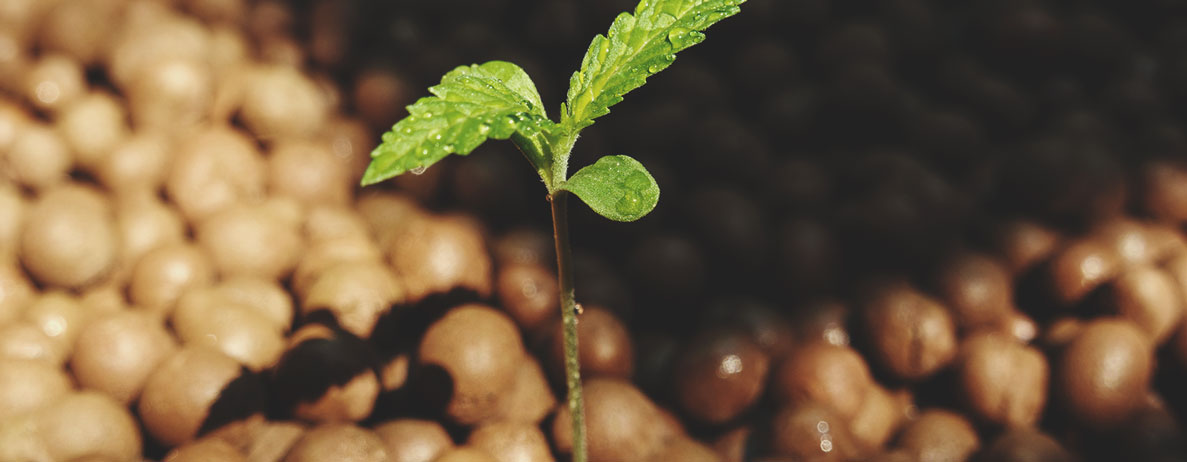
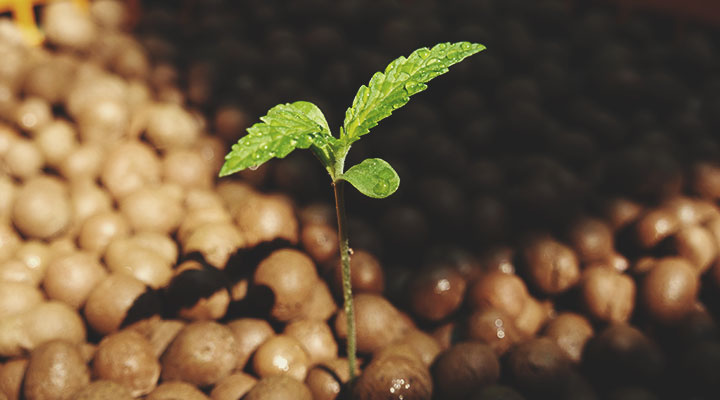
The Best Systems for Outdoor Hydroponics
So, you've considered the pros and cons of setting up a hydroponic system outdoors. If you’re eager to give it go, familiarise yourself with some of the possible setups below. We’ll be focusing chiefly on systems that involve fewer, easier components.
Deep Water Culture (DWC)
This simple method of hydroponics involves a single reservoir. Cannabis plants sit suspended on top of the container as their roots grow down into a nutrient solution below. You’ll need an electric air pump to power the airstone in the reservoir, which keeps the roots aerated. You can purchase specialized DWC kits or simply make them using buckets, a drill, a hole saw drill bit, and a net pot.
Kratky Method
This method is almost identical to DWC, with one minor change: the Kratky method uses no airstone or pump, and therefore no electricity. This low-maintenance technique makes hydro even cheaper. As the roots uptake the nutrient solution, the level falls, increasing the quantity of air in the reservoir. Depending on the size of your container, you might need to add more nutrient solution later on in the growing cycle.
Aquaponics
Aquaponic systems vary in their complexity, and it helps to have some basic experience with simpler techniques before giving it a go. Basic systems consist of a grow bed that houses the plants, an external reservoir that houses the fish, a pump, and a series of pipes to transport the ammonia-rich waste produced by the fish. Overall, aquaponics serves as a superb closed-loop system. You can even raise edible fish as a source of hyperlocal protein.
Ebb and Flow
As the name suggests, these systems intermittently submerge cannabis roots in a nutrient solution. A plant bed housing the cannabis sits above a reservoir, with the roots hanging down into an empty air-filled container. An electric timer and pump then consistently flood the plant bed, before the water drains back into the reservoir.
Tips for Creating a Thriving Outdoor Hydroponic System
With the above benefits, drawbacks, and individual systems in mind, here are some helpful tips and advice to get you off to the best start possible.
Choose Your Location Wisely
Choose a spot that receives at least eight hours of direct sunlight each day. It needs to feature good airflow, without exposing your plants to too much wind during stormy weather. And, of course, you also need to take privacy into account. A region of your garden that isn’t overlooked by nosey neighbors is ideal.
Consider the Equipment
Which method tickles your fancy? You’ll only need simple gear if opting for DWC or Kratky (a single trip to the store will suffice). However, you’ll need to run electricity close to your growing location if running air pumps. If you’re taking on the challenge of aquaponics or ebb and flow, you'll need to find a local or online hydro store to purchase specific items such as plant beds. Oh, and you’ll need to find some fish!
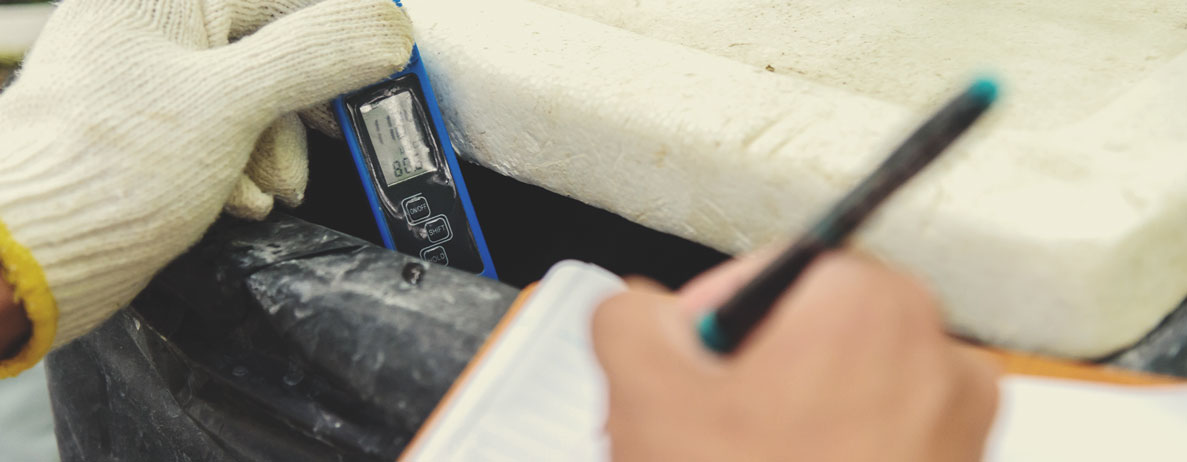
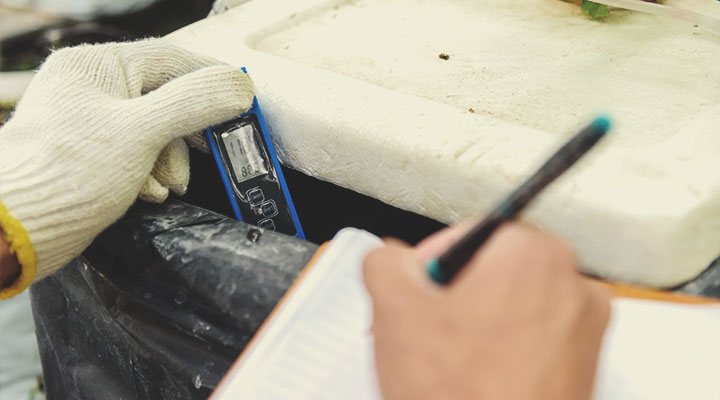
Provide Shelter
Leaving plants basking in the open sun certainly helps to accelerate growth at the right time of year. However, strong winds and scorching temperatures can knock you back a few steps. If you live further south, consider making the preemptive purchase of shade cloth and wooden stakes to defend against intensive heat. If you live in a windy region, buy windbreaks or place your setup in a location sheltered on several sides.
Keep Your Water Cool
Warm reservoir water can interrupt growth and stress your plants. Take measures to keep your water cool and out of direct sunlight (if using an external reservoir). If using a standalone setup, consider partially burying your containers/buckets to insulate them.
Ensure Adequate Air Circulation
A breezy spot will help to strengthen your plants during early veg and keep mold at bay during the late flowering stage. Although too much wind can snap and “burn” your plants, you can use the measures mentioned above to reduce wind damage; it’s harder to replicate a constant breeze when you need it.
Keep Pests at Bay
Pests are one of the biggest threats to cannabis plants outdoors. But you don’t need to bombard your garden with chemical pesticides. There are plenty of integrated pest management options to choose from. For example, you can deploy biological controls such as predatory insects. Introduce ladybugs if you have an aphid problem, or nematodes if fungus gnats become an issue. Companion plants are also a fantastic way to bring in beneficial insects while looking good and benefiting the soil nearby.
You’re Ready to Grow Hydro Weed Outdoors
By now, you're ready to make a decision. If you think growing hydro weed outdoors can work for you, why not give it a shot? Sure, there are some downsides to consider, but the benefits far outweigh them if you live somewhere with a relatively long growing season, reasonable weather, and more lenient cultivation laws. Not only are you aware of a few techniques to explore, but you’re ready to help your plants thrive using nature as an ally. Prepare yourself for some of the most potent, flavorful, and sustainable weed you’ll ever smoke.
Happy growing!
- Hydroponics: A Better Way to Grow Food https://www.nps.gov
- Cannabinoids and Terpenes: How Production of Photo-Protectants Can Be Manipulated to Enhance Cannabis sativa L. Phytochemistry https://www.frontiersin.org


























